Gum Disease Treatment – Brick Township, NJ
Saving Your Mouth from Gum Disease
Periodontal disease – or gum disease – is incredibly common in almost half of adults over 30 years old. While early symptoms (such as redness and swelling) might not seem that serious, the advanced stages of the disease can put your teeth and your overall oral health at serious risk. At Nu Dental Brick, once signs of periodontal infection have been identified, Dr. Gizachew will quickly develop a treatment plan to treat the infection and give your mouth a chance to heal. Are you troubled by inflamed or bleeding gums? Call us for an appointment today to discuss gum disease treatment in Brick Township, NJ.
Why Choose Nu Dental Brick for Gum Disease Treatment?
- State-of-the-Art Soft Tissue Lasers
- Expert Dentist and Team That Care
- Convenient Evening Dental Office Hours
What is Gum Disease?

Gum (periodontal) disease is an infection of the gums and connective tissues holding your teeth in place. In many cases, this situation occurs due to the accumulation of plaque and tartar, which typically happens because of poor oral hygiene. Without proper treatment, it can result in permanent damage to the gums, tooth loss, and other more serious oral health complications. There are usually two stages of gum disease:
- Gingivitis: As the earliest stage of gum disease, this is when you can reverse your situation by bettering your oral hygiene routine as well as visiting your dentist for checkups and cleanings.
- Periodontitis: This is the more advanced stage of periodontal disease, which can only be treated to help avoid serious issues, such as tooth loss.
Certain factors can typically raise your risk of getting gum disease, like poor oral hygiene, smoking or chewing tobacco products, certain medications, immune-compromising conditions, genetics, and even hormonal changes during pregnancy.
Symptoms of Gum Disease
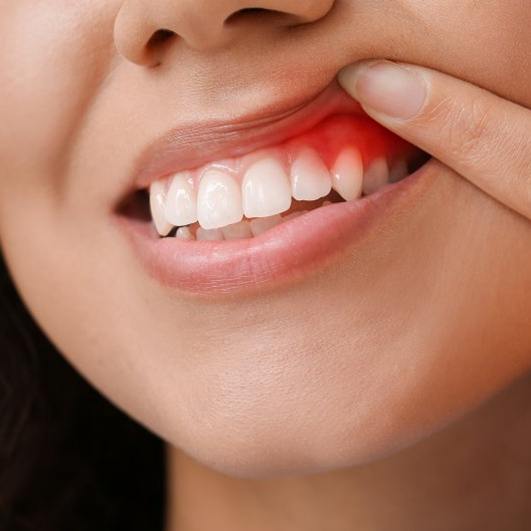
Here are the typical symptoms of gum disease in their various stages and what to look out for:
Gingivitis:
- Red/swollen gums
- Tender gums
- Bleeding when brushing and/or flossing
- Gum recession
- Bad breath (halitosis)
Periodontitis:
- Loose teeth
- Pain while chewing
- Tooth sensitivity
- Changes in a restoration’s fit (like dentures, etc.)
- Permanent tooth loss
How Do We Treat Gum Disease?
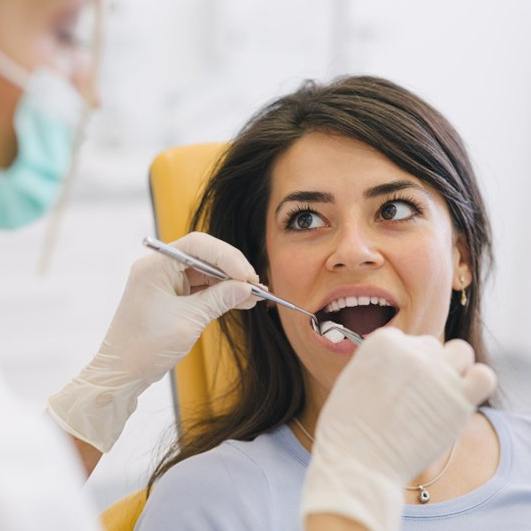
Some of the ways our team can address gum disease include:
Scaling & Root Planing
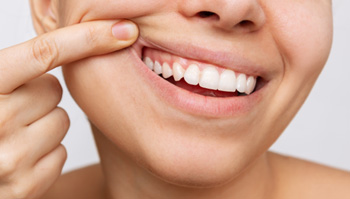
Gum disease is linked to a buildup of plaque and tartar on your teeth and gums. To get rid of these harmful substances from wherever they’re hiding in your mouth, we can perform a deep cleaning procedure known as scaling and root planing (SRP). It is an effective, non-surgical way to fight back against mild to moderate gum infections.
Do I Need Scaling & Root Planing?

You might need SRP if you are experiencing common symptoms of gum disease, such as:
- Red, swollen gums
- Gums that bleed easily when you brush and floss
- Visible plaque buildup on your teeth near the gumline
- Persistent bad breath
- Mild gum recession
If your infection is still in its earliest stages, you might be able to reverse it via at-home oral hygiene. Our team will coach you on what you should do. Otherwise, we may recommend scaling and root planing.
The Process of Scaling & Root Planing
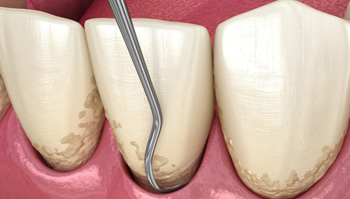
Scaling and root planing is a two-part process.
Scaling involves removing plaque and tartar from above and below the gumline with special instruments; we will clean down to the bottom of the pockets that have formed between your teeth and gums. Then, during the root planing phase, the surfaces of the roots will be smoothed so that they can be reattached to the gums and bacteria will not cling to them as easily as it once did.
Depending on the extent of your gum infection, SRP may require multiple appointments (we usually treat one quadrant of the mouth at a time).
Aftercare Tips for Scaling & Root Planing

SRP is a moderately intense treatment, so your gums and teeth may be somewhat sore and tender afterward. To encourage healing and minimize your discomfort, you can:
- Regularly rinse your mouth with warm salt water.
- Clean your teeth with a soft-bristled toothbrush. Move it in circular motions and be gentle along your gumline.
- Temporarily avoid hot, spicy, and acidic foods and beverages.
- Eat only soft foods during the first 48 hours of your recovery.
- Avoid intense physical exertion for a few days.
Antibiotic Treatment
After the initial process of scaling and root planing is complete, we can place a special antibiotic called Arestin in your periodontal pockets. Arestin consists of multiple microspheres containing medication; as time goes on, the medication will slowly be released so that it can kill any bacteria that return to the area. Doing this allows us to continue to protect your mouth from an infection while your gums are still in the process of recovering.
Osseous Surgery
If gum disease has been allowed to continue for too long, pockets may have formed in the bone surrounding the teeth. To eliminate these pockets and prevent further damage, osseous surgery can be performed. After the roots of the teeth have been cleaned, we’ll reshape the surrounding bone tissue; bone grafting will also be required. The gums will have to be opened during this procedure, but they will be placed back and sutured at the end of the procedure.
Gum Disease Treatment FAQs
Is it possible to reverse gum disease?
When caught early enough, yes, the initial swelling, tenderness, and inflammation of gum disease can be made to completely go away. However, if the infection has progressed to the point that the gums have receded and nearby bone has weakened, this can only be managed-the bone and soft tissue will not grow back. That’s why it’s so important to get treatment as soon as possible if you suspect you have gum disease or been diagnosed. The earlier we can intervene, the more problems we can prevent entirely!
What can I do to stop gum disease at home?
Thankfully, you’re probably already familiar with the best practices when it comes to preventing gum disease at home. Brushing and flossing every day can prevent the build-up of harmful bacteria that lead to the infection. Receiving a professional dental cleaning from our team twice a year can also make a big difference, as we can get to those spots in your mouth you can’t reach or routinely miss. Adding an alcohol-free mouthwash can also make sure you stay gum disease-free.
Does gum disease hurt?
Despite how damaging it can be, gum disease doesn’t cause a lot of pain. What most people notice is sensitivity. The gums become inflamed and tender, and if they start to recede, the teeth can start to ache. Why? Because the enamel around the newly exposed roots is thinner compared to the upper portion, meaning the sensitive nerve is more exposed to temperature. Typically, discomfort isn’t the most obvious sign compared to seeing gums that are red, puffy, or pulling away from the teeth.
Can dental insurance be used to pay for gum disease treatment?
While every dental insurance plan is different, in most cases, yes, you can use your benefits to offset the cost of gum disease treatment. This type of care is deemed as “essential” in most policies. However, the types of procedures it will pay for, and at what percentage, can vary. Fortunately, our team will give you an estimate of your out-of-pocket expenses before we provide any treatment so you know what to expect.